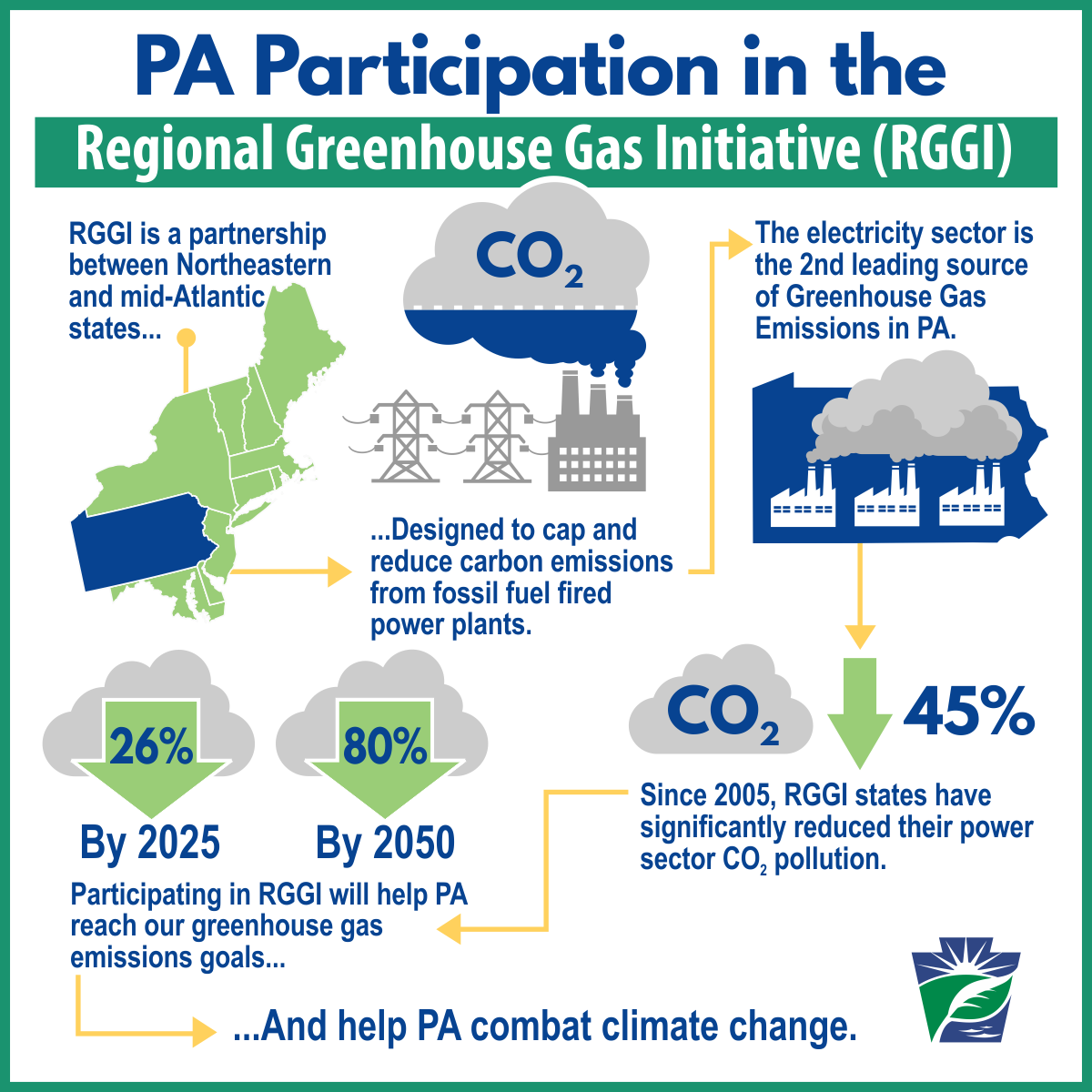
The RGGI includes States in the Northeastern US
From an Article by Rachel McDevitt, StateImpact Penna. (WESA), July 13, 2021
The Regional Greenhouse Gas Initiative (RGGI) is a cap-and-trade program intended to cut carbon emissions from the power sector.
Pennsylvania is set to become the first major fossil fuel-producing state to put a price on carbon emissions, by joining this RGGI. The Environmental Quality Board voted 15-4 Tuesday to adopt the final regulation that would have Pennsylvania join the Regional Greenhouse Gas Initiative, a cap-and-trade program that targets carbon dioxide emissions in the power sector. EQB’s vote is a significant step in the regulatory process.
The rule now goes to the Independent Regulatory Review Commission (IRRC) and the Attorney General’s Office for final review before publication. The Wolf Administration hopes to join the program in early 2022.
IRRC determines whether a proposed rule is in the public interest, as defined by state law. The board is made up of three Democratic appointees and two Republican appointees.
The Attorney General must determine whether a proposed regulation complies with existing law. There could be other hurdles. PA-DEP Secretary Patrick McDonnell has said he anticipates a legal challenge.
Rep. Daryl Metcalfe (R-Butler) said during the EQB meeting that lawmakers will bring up a bill this fall that would require legislative approval to join a cap-and-trade program. Gov. Wolf vetoed a similar bill last year.
Gov. Tom Wolf signed an executive order starting the RGGI process in October 2019, as part of his overall climate goals of reducing state greenhouse gas emissions 26 percent by 2025 and 80 percent by 2050, compared to 2005 levels.
Pennsylvania is one of the country’s top five carbon-emitting states. The PA Department of Environmental Protection says emissions from the state’s power sector are greater than total emissions from some small countries.
Scientists say emissions must be cut dramatically in the next decade to avoid the worst effects of climate change.
PA-DEP estimates RGGI participation will prevent between 97-227 million tons of carbon emissions between 2022 and 2030, depending on factors such as energy demand. It says the pollution reduction could result in billions of dollars in health care savings.
###
